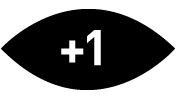

Wild tells the true story of Cheryl Strayed, a young novelist and essayist who, at 26, after the death of her mother, divorce from her husband, and descent into years of grief and destructive behavior, sets out alone to hike the 1,100-mile Pacific Crest Trail. Strayed chronicled her journey of self-discovery and emotional healing in the best selling memoir Wild: From Lost to Found on the Pacific Crest Trail (2012).
The film adaptation by Canadian director Jean-Marc Vallée (C.R.A.Z.Y., The Young Victoria, Dallas Buyers Club) and British author Nick Hornby (novelist of High Fidelity and About a Boy and screenwriter of Fever Pitch and An Education) never lets the audience forget we are watching a cinematic reconstruction of a personal memoir. The filmmakers adhere to the book’s flashback structure, with mixed results.
As we watch Strayed make her way from the Mojave Desert to the border between Oregon and Washington State, we’re given glimpses into the childhood and young adult experiences that led to her decision to make the trip. But the frequent crosscutting between times and places, and the minimal duration of the flashbacks, keeps the viewer at an intellectual distance. We’re too focused on learning about Strayed’s history to ever get completely immersed in her psyche. In addition to the numerous flashbacks, we hear her thoughts, read the literary quotes she leaves for other hikers at various stops along the trail, and get serenaded with the song fragments stuck in her head that help keep her going.
This barrage of narrative and thematic information adds up to a rather busy picture considering how straightforward a story it tells. The most effective scenes are those in which Strayed simply walks in silence or has brief but illuminating conversations with the various people she meets along the way.
Wild suffers in comparison with Tracks, another picture about a determined young woman on a solo cross-country trek. Released just six months prior, Tracks is an adaptation of Robyn Davidson's memoir that chronicles her nine-month journey across the Australian outback. Though Tracks also features voiceover quotes from its protagonist’s book and contains a few ethereal flashbacks to her childhood, these narrative devices are used sparingly. We become deeply engaged in figuring out what drives the enigmatic heroin of Tracks, making it a far more active viewing experience than Wild, which doles out information about Strayed in organized, reliable increments.
Fortunately, Strayed’s story is a compelling one, and we never grow weary of it or of her as the two-hour picture unfolds. Vallée and Hornby slim down the details of the backstory, focusing in on the ways in which each glimpsed incident and development in young Strayed’s life leads her to hike the PCT. Wild is a movie that will be lauded for its editing, even though everything the critics will undoubtedly praise about the structure and cutting has far more to do with screenwriting than film editing.
And yet, I found myself wishing for more details about Strayed’s past life. The bare-bones quality of the storytelling is part of what makes it impossible to forget we're watching a movie adaptation of a book. The memoir (which I have not read) likely goes into far more detail about Strayed’s relationship with the key people in her life, her mother, brother, and husband. These characters—as played by Laura Dern, Keene McRae, and Thomas Sadoski, respectively—are vividly expressed through their fragmented appearances, but I wanted to know more about how the changes in these relationships influenced not only Strayed’s pilgrimage, but the downward spiral that necessitated it. Of course, suffering a major loss can devastate anyone, but the young Strayed is presented as so grounded and self-possessed that it seems she could weather even the most life-altering grief.
Reese Witherspoon, who also produced, stars as Strayed. She rises to the challenge by dropping most of her signature mannerisms and immersing herself in the role—her most absorbing performance since her Oscar-winning turn as June Carter Cash in Walk The Line (2005). If only she could have shed her movie star beauty as well. Even after months of hiking, the Cheryl Strayed of this picture looks impossibly gorgeous—no chapped lips, no frayed hair, no sun damage around the eyes, just a few bruises and scars from lugging around her giant backpack. Witherspoon’s red-carpet-ready comportment makes for another unfavorable comparison to Tracks, in which Mia Wasikowska is able to look authentically plain at the beginning of her trek and by the end fully takes on the appearance of someone who walked across a vast desert.
Wild is one of those movies that you like because of what it doesn't do more than for what it does. Never pretentious, falsely triumphant, or insufferably new-agey, it refuses to offer any specific or simplistic answers about how to heal or put the past behind you. The downside of this absence of contrivances is that the film also lacks a genuine sense of an emotional journey. Strayed sets out to accomplish a goal and she achieves that goal. Along the way she learns a great deal about hiking, but little about herself or about life that, it seems, she didn’t already know. It is as if the pre-hike Strayed already understood everything she needed to understand but had to put herself through a physical ordeal in order for that intellectual knowledge to fully manifest in her soul. There is great potential for a screenwriter and director to put this idea across visually even better than an author can with words in a book. But Wild feels like a mere illustration of the far richer story we might find in the memoir.
Vallée, co-editor Martin Pensa, and cinematographer Yves Bélanger apply the same cinematic aesthetic to Wild as to their previous collaboration, Dallas Buyers Club. Both films are shot in an almost documentary style—with handheld cameras, no rehearsal, and minimal takes—but with a hyper-real editorial technique—utilizing meticulous sound designed, intricate montage, and carefully composed mise en scene to draw us away from the immediately unfolding action and place us in the mind of the central character. While this approach served the dense narrative of Dallas Buyers Club brilliantly, it is less successful in the sparser Wild. The handheld camera works fine when presenting the piecemeal flashbacks, but in the hiking scenes the technique prevents us from feeling alone with Strayed. The widescreen nature shots have just enough operator giggle to constantly remind us that a cameraman is present. We are left with the odd, semi-conscious sensation that, rather than walking by herself, Strayed is being followed around by a film crew. A less problematic choice is the way the sound is mixed. There is often a dreamlike minimalism to the film’s aural pallet which effectively draws our focus to the specific sounds Strayed hears or helps guide us back and forth from present tense to past. While this audio design is impressive in what it sets out to do, it has the unintended consequence of drawing attention its crafted artificiality. I found myself continuously aware of what wind, footsteps, ambiance, and other noises were created in post-production rather than recorded on location. Though I am an editor myself with years of sound mixes under my belt, I am almost never aware of sound editing on the first viewing of a film that I connect with.
Though I never felt transported from my comfortable theater seat into the environment of this film’s protagonist, the way more engrossing pictures about cross country odysseys do—from Nicolas Roeg’s Walkabout (1971) to Kelly Reichardt’s Meek's Cutoff (2010)—I still found Wild an engaging film about an dynamic woman.






